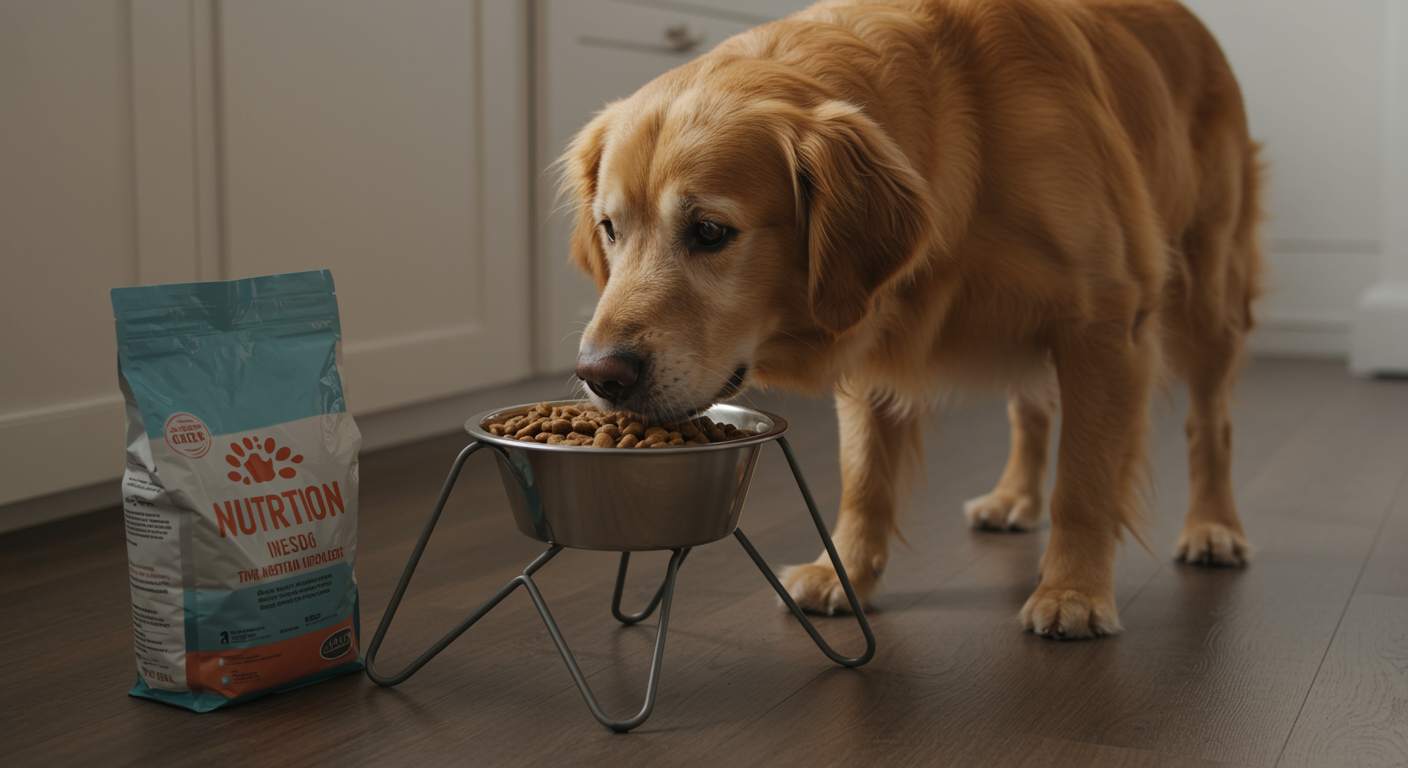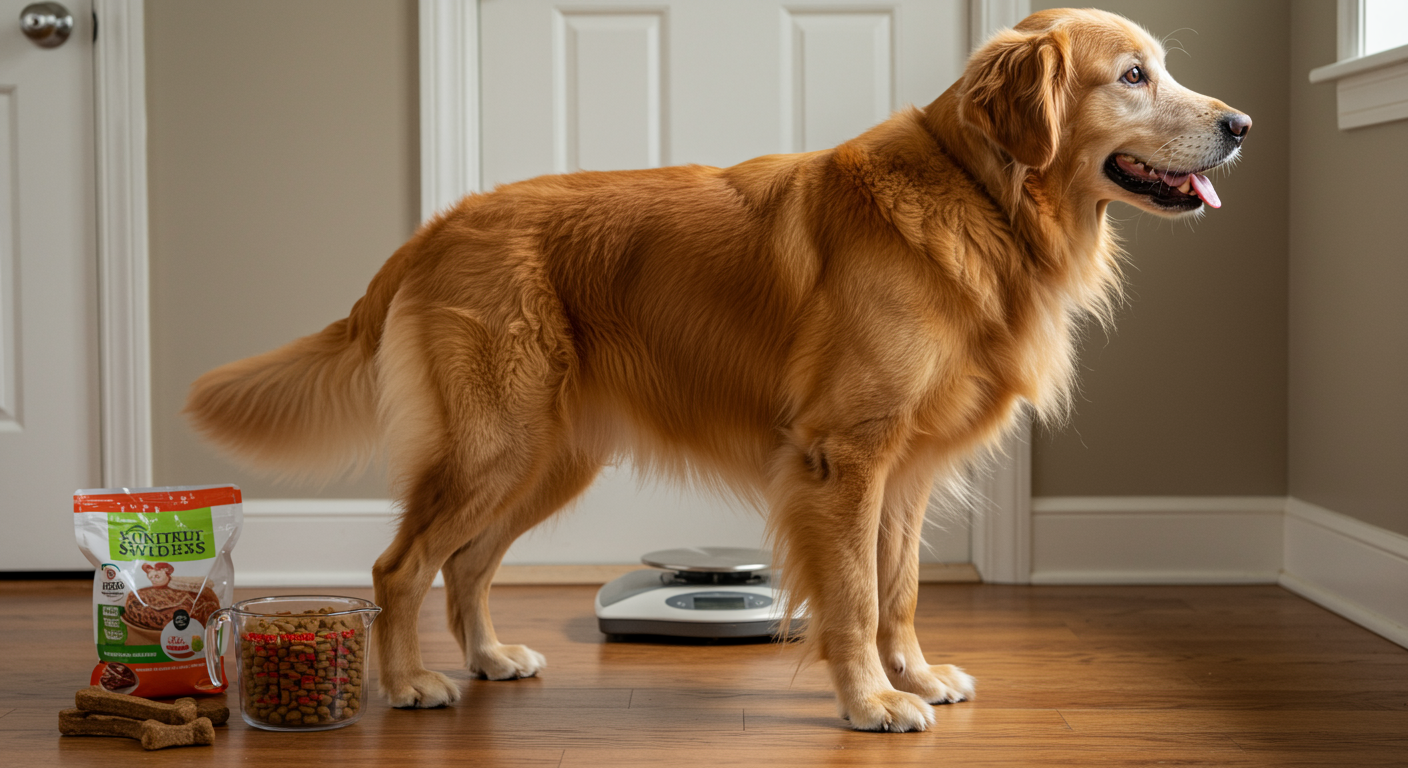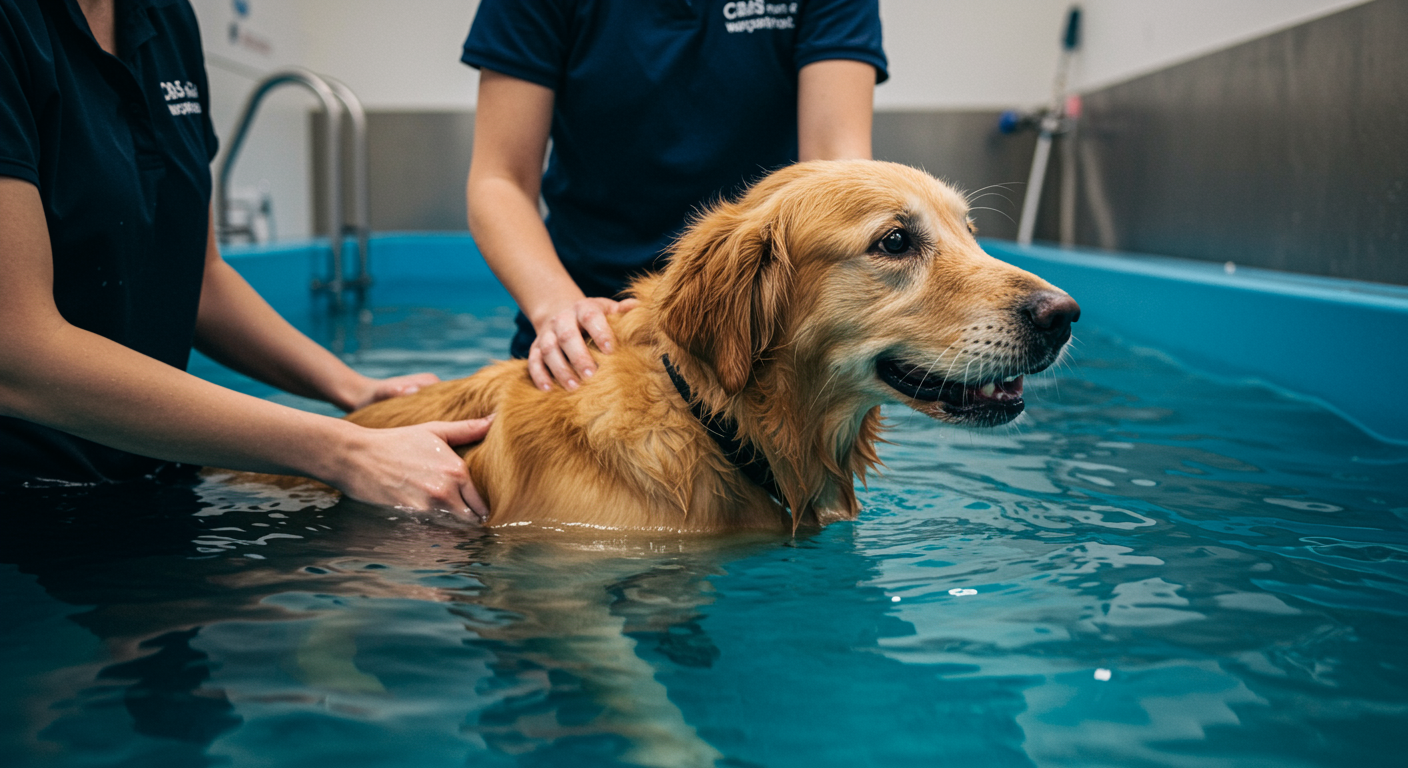Temperature regulation undergoes significant changes as Golden Retrievers enter their senior years, creating new challenges for maintaining optimal body temperature and comfort in varying environmental conditions. The aging process affects multiple systems involved in thermoregulation, including the cardiovascular system, metabolic processes, coat insulation properties, and behavioral responses to temperature changes. Understanding these age-related modifications becomes crucial for providing appropriate environmental conditions, preventing temperature-related health complications, and ensuring comfort throughout the golden years.
Senior Golden Retrievers face increased vulnerability to both hypothermia and hyperthermia due to compromised thermoregulatory mechanisms that once efficiently maintained body temperature within narrow, healthy ranges. These changes can be subtle initially but become more pronounced with advancing age, requiring proactive management strategies to prevent serious health consequences. The challenge lies in recognizing early signs of thermoregulatory dysfunction while implementing preventive measures that support comfort and safety across all seasons and environmental conditions.
The importance of proper temperature management extends beyond simple comfort considerations to encompass critical health maintenance. Temperature extremes can exacerbate existing health conditions common in senior dogs, including arthritis, heart disease, and respiratory problems, while also increasing the risk of serious complications such as heat stroke or hypothermia. Success in managing senior thermoregulation requires understanding the physiological changes involved, recognizing individual variations in temperature tolerance, and implementing comprehensive strategies that support optimal temperature regulation throughout the aging process.
Understanding Age-Related Thermoregulatory Changes
Physiological Systems Affecting Temperature Control
The thermoregulatory system involves complex interactions between multiple body systems that can be significantly affected by the aging process in Golden Retrievers.
Cardiovascular System Changes: Aging affects heart function and circulation efficiency, reducing the body’s ability to redistribute heat through blood flow. Decreased cardiac output and reduced peripheral circulation can impair both heat dissipation during warm weather and heat conservation during cold conditions.
Metabolic Rate Modifications: Senior Golden Retrievers typically experience a 20-30% decrease in basal metabolic rate, reducing the internal heat production that helps maintain body temperature. This reduction makes them more susceptible to cold environments and slower to warm up after exposure to cool conditions.
Coat and Skin Alterations: Age-related changes in coat density, skin thickness, and subcutaneous fat distribution affect insulation properties. Thinning coats, reduced oil production, and decreased skin elasticity can compromise the natural insulation that helps maintain body temperature.
Neurological Function Decline: The hypothalamus and other brain regions responsible for temperature regulation may become less responsive with age, resulting in delayed or inadequate responses to temperature changes.
Hormonal Influences on Temperature Regulation
Thyroid Function Changes: Hypothyroidism, common in senior Golden Retrievers, significantly affects temperature regulation by reducing metabolic rate and heat production. Dogs with thyroid dysfunction often show increased cold sensitivity and difficulty maintaining normal body temperature.
Adrenal Function Modifications: Changes in cortisol production and other stress hormones can affect the body’s ability to respond appropriately to temperature stresses and maintain homeostasis.
Growth Hormone Decline: Age-related decreases in growth hormone production can affect muscle mass and metabolic function, both of which contribute to heat production and temperature maintenance.
Sex Hormone Changes: Alterations in reproductive hormone levels can affect thermoregulation, particularly in spayed females who may experience changes in heat tolerance and cold sensitivity.
| System | Age-Related Changes | Temperature Impact | Clinical Signs |
|---|---|---|---|
| Cardiovascular | Reduced cardiac output, poor circulation | Impaired heat distribution | Cold extremities, slow warming |
| Metabolic | Decreased metabolic rate | Reduced internal heat production | Increased cold sensitivity |
| Coat/Skin | Thinning coat, reduced subcutaneous fat | Poor insulation | Temperature fluctuations |
| Neurological | Slower hypothalamic responses | Delayed temperature adjustments | Poor adaptation to changes |
| Endocrine | Thyroid, adrenal dysfunction | Altered heat production/regulation | Chronic temperature issues |
Cold Sensitivity and Hypothermia Risk
Recognizing Cold-Related Problems
Senior Golden Retrievers often develop increased sensitivity to cold temperatures that may not have affected them in their younger years. Recognizing early signs of cold stress helps prevent progression to dangerous hypothermia.
Early Cold Stress Signs: Shivering, seeking warm locations, reluctance to go outside in cold weather, curling up in tight positions, and preference for sunny spots indoors indicate developing cold sensitivity.
Progressive Cold Symptoms: Lethargy, stiffness, pale gums, slow movements, and decreased appetite can indicate more significant cold stress requiring intervention.
Severe Hypothermia Indicators: Weakness, confusion, slow heart rate, shallow breathing, and loss of consciousness represent medical emergencies requiring immediate veterinary attention.
Individual Variation: Some senior Golden Retrievers maintain better cold tolerance than others, making individual assessment important for determining appropriate cold weather management strategies.
Risk Factors for Cold Intolerance
Underlying Health Conditions: Arthritis, heart disease, diabetes, and kidney disease can increase cold sensitivity by affecting circulation, metabolism, or overall health status.
Medication Effects: Some medications commonly used in senior dogs can affect temperature regulation or circulation, increasing cold sensitivity as a side effect.
Body Condition: Underweight dogs have less insulation and reduced metabolic reserves, while overweight dogs may have circulation problems that affect temperature regulation.
Activity Level: Reduced activity levels in senior dogs mean less internal heat production through muscle activity, increasing susceptibility to cold environments.
Cold Weather Management Strategies
Environmental Modifications: Providing warm, draft-free sleeping areas with appropriate bedding helps maintain body temperature during rest periods. Heated beds or warming pads can provide additional comfort for cold-sensitive dogs.
Protective Clothing: Dog coats, sweaters, and booties can provide external insulation for dogs with compromised natural temperature regulation. Proper fit and breathable materials are essential for effectiveness and comfort.
Activity Adjustments: Shorter, more frequent outdoor periods during cold weather help maintain necessary exercise while preventing excessive cold exposure. Indoor activities can supplement outdoor exercise during extreme weather.
Nutrition Support: Slightly increased caloric intake during cold months can help support the increased energy requirements for temperature maintenance in senior dogs.
| Cold Management | Strategy | Implementation | Monitoring Points |
|---|---|---|---|
| Indoor Environment | Warm sleeping areas, draft elimination | Heated beds, appropriate bedding | Comfort level, temperature preferences |
| Protective Gear | Coats, sweaters, booties | Proper sizing, quality materials | Skin irritation, overheating |
| Activity Modification | Shorter outdoor periods, indoor exercise | Scheduled breaks, alternative activities | Exercise tolerance, warmth maintenance |
| Nutritional Support | Increased calories, warm foods | Gradual diet adjustments | Weight maintenance, appetite |
Heat Sensitivity and Hyperthermia Prevention
Understanding Heat-Related Vulnerabilities
Senior Golden Retrievers often become more susceptible to heat-related problems due to age-related changes in their ability to dissipate heat effectively.
Reduced Panting Efficiency: Aging can affect respiratory function and panting effectiveness, reducing the primary mechanism dogs use for heat dissipation.
Cardiovascular Limitations: Heart conditions common in senior dogs can impair circulation needed for effective heat distribution and cooling.
Medication Interactions: Many medications used for senior health conditions can affect heat tolerance or increase dehydration risk during warm weather.
Behavioral Changes: Senior dogs may be less likely to seek shade or water independently, requiring more attentive management during warm weather.
Heat Stress Recognition
Early Heat Stress Signs: Excessive panting, drooling, seeking cool surfaces, reluctance to exercise, and restlessness indicate developing heat stress that requires intervention.
Progressive Symptoms: Heavy drooling, difficulty breathing, weakness, vomiting, or diarrhea suggest more serious heat stress requiring immediate cooling measures.
Heat Stroke Emergency: Collapse, seizures, loss of consciousness, or extremely high body temperature (over 106°F) represent life-threatening emergencies requiring immediate veterinary care.
Recovery Monitoring: Even after apparent recovery from heat stress, continued monitoring is essential as complications can develop hours later.
Heat Prevention Strategies
Environmental Controls: Air conditioning, fans, and cool resting areas help maintain comfortable temperatures during hot weather. Shade structures and cool flooring materials provide additional relief.
Activity Timing: Scheduling exercise and outdoor activities during cooler morning or evening hours helps prevent heat-related stress while maintaining necessary activity levels.
Hydration Management: Ensuring constant access to fresh, cool water and encouraging regular drinking helps support the body’s cooling mechanisms.
Cooling Aids: Cooling mats, wet towels, and kiddie pools can provide additional cooling options for dogs showing heat sensitivity.
Seasonal Adaptation Strategies
Winter Care Protocols
Gradual Acclimatization: Allowing senior dogs time to adjust gradually to cooling temperatures helps their thermoregulatory systems adapt more effectively than sudden exposure to cold weather.
Shelter and Bedding: Providing appropriate shelter from wind and precipitation, along with insulated bedding, helps maintain warmth during cold weather periods.
Exercise Modifications: Adjusting exercise duration and intensity based on temperature conditions helps maintain fitness while preventing cold-related stress.
Health Monitoring: Increased attention to arthritis symptoms, appetite changes, and energy levels helps identify cold-related health impacts requiring intervention.
Summer Management Approaches
Early Heat Preparation: Beginning heat management strategies before temperatures become extreme helps senior dogs adapt more successfully to warm weather challenges.
Cooling Station Setup: Creating designated cool areas with appropriate flooring, ventilation, and water access provides relief during hot periods.
Grooming Considerations: Appropriate coat management through professional grooming can help improve heat dissipation while maintaining skin protection.
Activity Restrictions: Limiting strenuous activities during peak heat hours while maintaining appropriate exercise through modified schedules and intensity levels.
Transition Period Management
Spring Adaptations: As temperatures begin warming, gradual reduction of winter protective measures allows natural acclimatization while monitoring for heat sensitivity development.
Fall Preparations: Beginning cold weather preparations before temperatures drop significantly helps senior dogs adjust more comfortably to cooling conditions.
Weather Monitoring: Paying attention to weather forecasts and preparing for temperature changes helps prevent stress from unexpected conditions.
Flexibility: Maintaining flexibility in management approaches allows for adjustments based on individual responses and changing weather patterns.
| Season | Primary Concerns | Management Focus | Monitoring Priorities |
|---|---|---|---|
| Winter | Hypothermia, cold stress | Warmth provision, activity modification | Comfort level, joint stiffness |
| Spring | Adaptation to warming | Gradual gear reduction, allergy management | Heat tolerance development |
| Summer | Hyperthermia, dehydration | Cooling strategies, activity timing | Heat stress signs, hydration |
| Fall | Preparation for cold | Gradual protection increase | Cold sensitivity development |
Medical Conditions Affecting Temperature Regulation
Thyroid Disorders
Hypothyroidism Impact: This common condition in senior Golden Retrievers significantly affects temperature regulation by reducing metabolic rate and heat production. Dogs with hypothyroidism often show marked cold intolerance.
Treatment Considerations: Proper thyroid hormone replacement therapy can improve temperature regulation, but adjustment periods may require additional temperature management support.
Monitoring Requirements: Regular monitoring of thyroid hormone levels helps ensure optimal treatment while watching for changes in temperature tolerance.
Seasonal Adjustments: Dogs with thyroid conditions may require medication adjustments during extreme weather periods to maintain optimal temperature regulation.
Cardiovascular Conditions
Heart Disease Effects: Various heart conditions can impair circulation and reduce the cardiovascular system’s ability to support effective temperature regulation.
Medication Impacts: Cardiac medications may affect temperature regulation through various mechanisms, requiring careful monitoring during temperature extremes.
Exercise Limitations: Heart conditions may limit exercise tolerance, reducing internal heat production and requiring alternative warming strategies.
Emergency Considerations: Dogs with heart conditions may be at higher risk for complications during temperature emergencies, requiring more aggressive prevention strategies.
Diabetes and Metabolic Disorders
Blood Sugar Impacts: Diabetes can affect circulation and overall health status, influencing temperature regulation capabilities.
Dehydration Risk: Diabetic dogs may be at increased risk for dehydration during hot weather, affecting their ability to regulate temperature through normal cooling mechanisms.
Medication Considerations: Insulin and other diabetes medications may require adjustments during extreme weather periods when appetite and activity levels change.
Complication Prevention: Careful temperature management helps prevent complications that could worsen diabetic control and overall health status.
Environmental Design for Temperature Comfort
Indoor Climate Control
Heating Systems: Appropriate heating systems that provide consistent, comfortable temperatures without creating drafts or hot spots help maintain optimal indoor environments.
Cooling Options: Air conditioning, fans, and ventilation systems provide necessary cooling while maintaining appropriate humidity levels for comfort.
Humidity Management: Maintaining appropriate humidity levels supports both heating and cooling effectiveness while preventing skin and respiratory problems.
Zone Control: Creating different temperature zones within the home allows dogs to choose their most comfortable locations based on their current needs.
Outdoor Environment Modifications
Shelter Structures: Appropriate shelters that protect from wind, rain, and sun while providing good ventilation help create comfortable outdoor spaces.
Surface Considerations: Choosing appropriate ground surfaces that don’t become extremely hot or cold helps maintain paw comfort during outdoor activities.
Shade Creation: Providing adequate shade through natural or artificial means helps create comfortable outdoor areas during warm weather.
Wind Protection: Protecting from cold winds while allowing cooling breezes during warm weather requires thoughtful landscape and structure design.
Bedding and Rest Area Optimization
Temperature-Adaptive Bedding: Bedding materials that provide insulation during cold periods while remaining cool during warm weather offer year-round comfort.
Heated Bed Options: Electric heating pads or beds designed for pets can provide additional warmth for cold-sensitive senior dogs.
Cooling Bed Alternatives: Cooling mats or elevated beds that promote air circulation help provide relief during warm weather periods.
Location Flexibility: Providing multiple rest areas with different temperature characteristics allows dogs to choose their most comfortable option.
| Environment | Temperature Control | Key Features | Safety Considerations |
|---|---|---|---|
| Indoor | HVAC systems, zone control | Consistent temperature, humidity control | Electrical safety, maintenance |
| Outdoor | Shelter, shade, wind protection | Weather resistance, ventilation | Structural stability, accessibility |
| Bedding | Heated/cooling options | Temperature adaptation | Electrical safety, material quality |
| Rest Areas | Multiple location options | Flexibility, comfort | Safe access, appropriate surfaces |
Emergency Temperature Management
Hypothermia Response
Immediate Actions: Gradual rewarming using blankets, warm (not hot) water bottles, and moving to warm environments helps reverse mild hypothermia safely.
Professional Care: Severe hypothermia requires immediate veterinary attention with controlled rewarming and monitoring for complications.
Prevention of Shock: Rapid rewarming can cause shock, making gradual temperature increase essential for safe recovery.
Monitoring Requirements: Continuous monitoring of vital signs during rewarming helps detect complications and guide treatment decisions.
Hyperthermia Emergency Response
Immediate Cooling: Moving to cool environments, applying cool (not cold) water to paws and belly, and providing air circulation helps begin emergency cooling.
Veterinary Care: Heat stroke requires immediate professional treatment with controlled cooling and monitoring for organ damage.
Cooling Limits: Excessive cooling can cause dangerous temperature drops, making controlled cooling essential for safe treatment.
Complication Watch: Heat stroke can cause delayed complications requiring ongoing monitoring even after apparent recovery.
Prevention Planning
Emergency Supplies: Maintaining emergency supplies including thermometers, blankets, cooling mats, and first aid materials helps prepare for temperature emergencies.
Professional Contacts: Having readily available contact information for emergency veterinary care ensures rapid response when temperature emergencies occur.
Family Education: Ensuring all family members understand emergency temperature management helps provide appropriate care when primary caregivers aren’t available.
Regular Drills: Practicing emergency responses helps ensure effective action during actual emergencies when stress levels are high.
Long-Term Temperature Management
Seasonal Planning
Annual Preparation: Planning for seasonal temperature challenges helps ensure appropriate supplies, equipment, and strategies are in place before they’re needed.
Equipment Maintenance: Regular maintenance of heating and cooling equipment ensures reliable function when temperature management becomes critical.
Health Monitoring: Tracking seasonal health patterns helps identify individual temperature sensitivities and guide management strategy development.
Adaptation Strategies: Developing flexible approaches that can be modified based on changing health status and environmental conditions supports long-term success.
Quality of Life Integration
Comfort Prioritization: Ensuring temperature management strategies support overall comfort and quality of life rather than simply preventing emergencies.
Activity Maintenance: Balancing temperature safety with continued activity and engagement helps maintain physical and mental health throughout senior years.
Independence Support: Designing temperature management strategies that support as much independence as possible while ensuring safety and comfort.
Family Integration: Incorporating temperature management into family routines helps ensure consistent implementation and reduces stress on both dogs and owners.
Supporting Optimal Thermoregulation
Managing body temperature and thermoregulation in senior Golden Retrievers requires understanding the complex physiological changes that affect temperature control with aging. The investment in comprehensive temperature management strategies pays significant dividends in comfort, health maintenance, and prevention of serious temperature-related complications that can threaten both quality of life and survival.
Success in senior temperature management lies not in creating perfectly controlled environments but in understanding individual needs, recognizing early warning signs, and implementing flexible strategies that adapt to changing conditions and capabilities. The goal extends beyond simple temperature control to encompass comprehensive comfort that supports continued engagement with life and maintenance of the joy that defines Golden Retrievers throughout their years.
The journey of managing thermoregulation challenges often deepens understanding of individual dogs’ needs and preferences while strengthening the caregiving relationship. Many owners discover that attention to temperature comfort significantly improves their senior dog’s overall well-being and helps maintain active participation in family life despite age-related changes.
Your commitment to understanding and managing temperature regulation for your senior Golden Retriever demonstrates profound dedication to their comfort and well-being throughout their golden years. Through careful attention to environmental conditions, recognition of individual needs, and implementation of appropriate management strategies, you ensure that temperature challenges don’t compromise the comfort, health, and happiness that make every day with your beloved companion precious and meaningful.

Rafael Souza is a digital marketing strategist and lifelong dog enthusiast. Passionate about Golden Retrievers, he shares practical, research-based tips to help owners provide healthier and happier lives for their furry companions.





